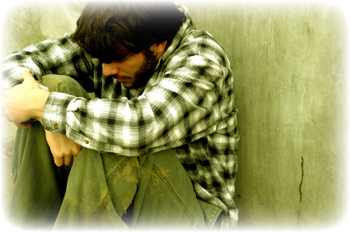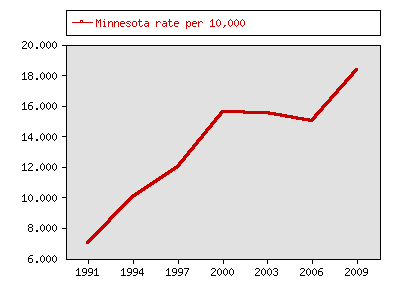Indicator 26: Homelessness


Goal: All people will be welcomed, respected and able to participate fully in Minnesota's communities and economy.
Rationale: This indicator deals with one of the most basic human needs – a safe, stable place to live.
About this indicator: Homelessness rose substantially in 2009 after a period of stability earlier in the 2000s. Data is available once every three years from a survey conducted by Wilder Research. The survey looks at people living without shelter. In 2009, the rate of homelessness in Minnesota was 18.4 per 10,000 population, well above the 2006 rate of 15.0. The number of homeless people has more than tripled since 1991, when the survey was first conducted.
The 2009 survey found 6,449 homeless people in the 7-county Twin Cities area, accounting for 67 percent of the statewide total.
The 2009 survey found 6,449 homeless people in the 7-county Twin Cities area, accounting for 67 percent of the statewide total.

For comparison: The 2009 survey found striking indicators of the recent economic downturn. Forty percent of those interviewed reported job loss or reduced hours as a reason they lost housing. More people experienced long-term homelessness. There was a rapid increase in the number of homeless young adults ages 18 to 21.
Things to think about: The survey is done at a single point in time. Over a year, the number of people who experience homelessness for at least a short period is much greater.
African Americans and American Indians are greatly overrepresented in the homeless population.
Experience of domestic abuse is common among women in shelters.
Sources:
- Wilder Research http://www.tccompass.org/
- Overview of Wilder homeless survey, http://www.wilder.org/fileadmin/user_upload/research/Homelessoverview2006_3-07.pdf
Related 2002 Milestones indicator:
Local data:




